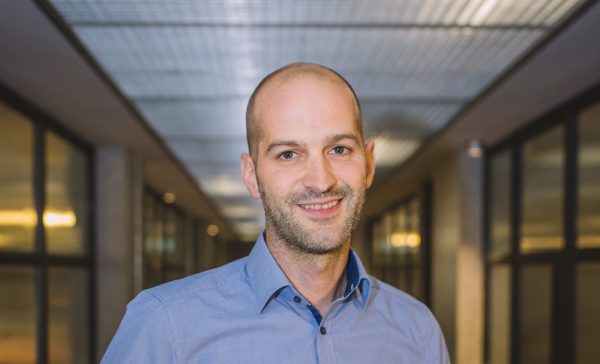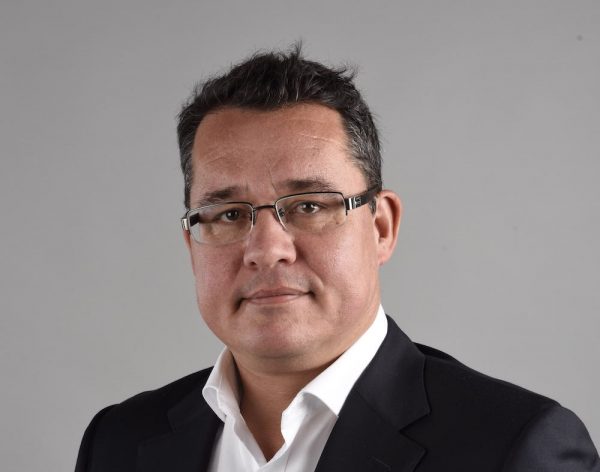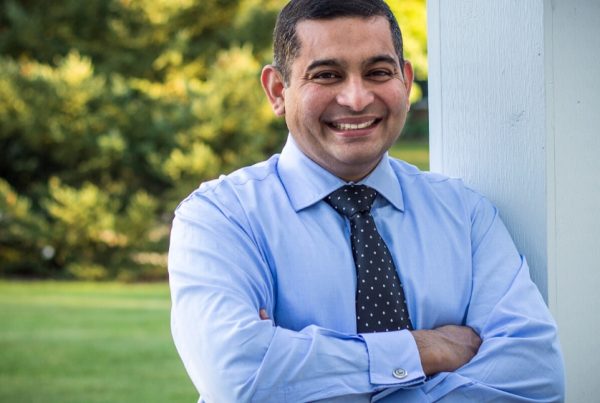CTO 3.0: The Neo Chief Technology Officer

As businesses continue to transform, what has this meant for the development of the CTO? Tasked with managing new working practices, digital systems, and the tech stack of their enterprises, do companies need a new kind of CTO to help them thrive post-pandemic?
The role of the CTO has been changing for the past decade. COVID-19 has also had a profound impact on what it means to be a CTO. Also, it’s clear that more human skills – often misleadingly called soft skills – are increasingly important to become a successful CTO. Managing new security environments and supporting their enterprise’s post-pandemic goals are critical components of what it means to be a CTO today.
According to the latest CTO survey from STXNext, over half (53%) of respondents’ state that scaling up innovation across their enterprise was their leading priority. Indeed, prioritizing is also a major challenge for nearly half (49%) of respondents, with continuing security concerns also a high priority for CTOs.
Research by Robert Half also concludes Whilst one of the top strategic priorities for CIOs and CTOs in 2022 is cost reduction and balancing budgets (26%), innovation and investing in new technologies (24%), building 5G capabilities into IT strategy (24%). Cloud projects and initiatives (24%) all ranked highly. This suggests that UK businesses will continue to enhance their online presence over the next 12 months.
And businesses looking to change or expand their CTO role will see potentially stiff competition says Phil Boden, Senior Manager at Robert Half said: “Technology initiatives have been at the heart of many businesses’ pandemic recovery efforts and underpin their plans for future growth, but they are also keen to protect themselves financially by balancing their budgets.”
Boden concluded: “As technology is always advancing, candidates who can adapt and evolve their skills over time are also highly desirable to businesses. Across the board, the level of demand is intense and candidates that meet businesses’ heightened requirements for soft and technical skills are in short supply, so companies should be prepared to compete.”
Russell Reynolds that looked into the minds of the CTO, concluded: “The most successful CTOs tend to have an active and abstract thinking style. They are willing to challenge the status quo and consider novel alternatives. Entrepreneurial and fluid in their approach, they are not likely to be hindered by process and bureaucracy; they have the keen ability to see the big picture.
“CTOs keep their eyes on the prize: they focus on key objectives and are quick to course correct when necessary,” the report continued. “They are business- and results-driven and demonstrate personal investment and involvement in driving initiatives forward. They consistently have a high level of flexibility in style, thinking and action. They tend to be more self-driven and are independent thinkers while being interpersonally reserved.”
Around the table
To gain an insight into what traits currently constitutes today’s CTO and how the role is changing, Silicon UK spoke with a range of specialist and experts.
[TB] Tim Beerman, CTO of Ensono.
As Chief Technology Officer, Tim is responsible for product strategy and development and ensuring those products and service delivery meet the changing needs of clients. He is shaping the internal organization that will continue Ensono’s product evolution and outstanding service delivery. Prior to Ensono, Tim held senior leadership positions in CitiMortgage and Savvis, now part of CenturyLink. A former officer in the United States Air Force, Tim also holds a bachelor’s degree in Mechanical Engineering from the Missouri University of Science and Technology.

All photos copyright 2015 by Jenni Kenney Photography and Design
JENNI KENNEY | PHOTOGRAPHER
jenni@jennikenney.com
www.jennikenney.com
[LW] Laurence Watson, Head of Technology at Subak.
Laurence, a Cambridge and UCL graduate, has been at the intersection of climate, tech and policy for ten years, having previously co-founded data science consultancy Future Energy Associates and working at Carbon Tracker, Ember and the UK parliament.

[CU] Chris Underwood, MD at Adastrum Consulting.
With over 20 years of experience in executive search and leadership talent advisory, Chris Underwood has worked for some of the biggest names in the executive search and selection industry before setting up Adastrum Consulting in 2009. Chris has led a wide range of international transformational leadership assignments from CxO to Functional Heads of FTSE 100 companies to venture capital-backed startups in the UK, Europe, and the USA. Rare to the industry, Chris is British Psychological Society (BPS) Level A&B qualified and is trained in several psychometric assessment tools. He studied Aeronautical Engineering at the University of Manchester.

[AK] Abby Kearbs, CTO, Puppet.
With nearly twenty years in the tech world, Abby Kearns is a true veteran of the technology industry. Her lengthy career has spanned product marketing, product management and consulting across Fortune 500 companies and startups alike. At Puppet, she leads the vision and direction of its current and future enterprise product portfolio. Before joining Puppet, Abby was the Executive Director of the Cloud Foundry Foundation, where she focused on driving the Foundation’s vision and growing the open-source project.

[MA] Mike Adler, CTO and CPO at N-able.
Mike is responsible for leading N-able’s global technology and product organizations. He previously held executive leadership positions at RSA, Constant Contact and Symantec and has over 20 years of experience in security, mobility and cloud environments.

[MG] Mathias Golombek, CTO of Exasol.
Mathias joined Exasol back in 2004 as a software developer. He later became the Head of the R&D team before joining the executive board in 2013 as Exasol’s CTO. His primary responsibility is Exasol’s technology, but he’s equally focused on nurturing the company’s unique working environment – a place where smart and passionate people are encouraged to explore and have fun with innovation.

[JH] James Harvey, Executive CTO EMEAR and Transformation Director, Cisco AppDynamics.
James Harvey is the EMEAR CTO at Cisco AppDynamics, working with clients to convert performance insights into business outcomes. He is also responsible for setting AppDynamics’ regional product strategy. Before joining Cisco AppDynamics, he held various positions in IT leadership at New Look, BP, Royal Bank of Scotland and ABN AMRO Bank.

[SU] Sujit Unni, CTO, PaySafe.
Sujit brings extensive technology transformation experience in lending and payments across banks and fintech firms in the US and UK and has worked for JP Morgan Chase, Vantiv and Barclays. Prior to joining Paysafe in January 2020, Sujit was CIO, Lending Platforms for Barclays UK. He oversaw the technology strategy, architecture and engineering for cards, mortgages and loans for Barclays’ Retail and Business Banking segments.

How has the role of Chief Technology Officer changed over the last few years?
[TB]
“An array of new emerging technologies and the developments of home working means CTO’s must be more flexible than ever. Companies’ strategies are constantly changing to align with new technological developments, so having the flexibility to adapt to these changes to facilitate your company’s utilization of new technology is paramount. Additionally, CTOs need to be connected to the business needs more than ever before, bridging business requirements with new and evolving technical solutions to compete in rapidly evolving markets.”
[MA]
“You used to find very distinct and defined ‘types’ of CTO. There was the outward facing, vision sharing CTO thinking 3-5 years down the line, and then there was the CTO you’d find in smaller organizations responsible for translating business requirements to technical realities. There was also the CTO that assumed more of a Chief Architect role. What we’re seeing more recently though, is a greater merging of responsibilities among those ‘types’ of CTO. CTOs in smaller organizations are being asked to be more public facing, those in larger organizations are asked to be more directly involved with the technical side of the role and so on.”
[AK]
“The role of Chief Technology Officer has transformed dramatically in the last 5-10 years as technology has become a more integral part of the business for every type of company. There are higher expectations for a CTO to actualize transformational work as it relates to the business—the role of establishing and remaking teams, the interaction paradigms among those teams, and the specificity of these teams’ focuses. The technology landscape has radically changed, putting more pressure on the CTO to understand the implications of what has happened and what is happening to predict and plan for the next 3-5 years.”
[CU]
“The role of the CTO has changed considerably over the years and perhaps unsurprisingly continues to evolve as technology becomes a critical part of every business and industry Transformation. That evolution has also seen variations of the job title to differentiate the ‘new business enabling technology role’ from the more traditional ‘enterprise services CIO’ role. It is not uncommon to see CITO (Information and Technology) or CTPO (Technology and Product) or CDTO (Digital and Technology) appointments being made to emphasize the difference in mandate, business change and business impact.”
What do you find the most challenging aspect of being a CTO?
[AK]
“The technology landscape moves fast and changes in both predictable and unpredictable ways. As a CTO, I have to stay on top of this dynamic industry—remaining informed any way that I can, from conversations with my peers to what the media publishes to what’s being posted on social media to the sometimes invisible writing on the wall. Even on my days off, I’m always reading and catching up on this rapidly changing landscape to better understand what our customers need, what the business needs, and what the industry will look like in a year from now.”
[SU]
“As the CTO role continues to evolve, things that keep me awake at night are: accelerating the digital journey. While the pace of digital adoption has undoubtedly picked up, particularly during the pandemic, most firms have only scratched the surface in terms of digitizing processes, enabling distribution etc. True digital transformation kicks in when the very processes we know and love are reimagined, and to that extent, the tech is only as good as the process in the front of the house. How CTOs can extend their remit to influence the core business processes without impacting the customer experience is a challenge we all have to work through.
“The emerging cyber threat landscape is always on every technology professional’s agenda. Probably now more so than ever and especially in the last 18-24 months is the evolving security threat ecosystem both from internal and external sources.
“Finally, everything cloud and resulting complex environments continue to be front of mind. While the cloud offers some very distinct benefits and opportunities, the different and varying models of adoption ranging from private, public to hybrid cloud also present unique challenges. From establishing the right operating model to managing the economics and putting in place the right monitoring ecosystem; underpinned by required scaling and capabilities to support business growth.”
[MA]
“For me personally, the most challenging part of being a CTO is really driving a technical vision in a time when security is top of mind. The sheer number of considerations you need to make with regards to how cybersecurity concerns impact your technology stack is only increasing. The breadth of resources needed to keep pace with the latest technologies while keeping on top of transitions that may be happening internally, regulatory demands, legal requirements and enabling your organization to do business is a lot to sit with one person.”
[MG]
“It’s no surprise that CTOs love to concentrate on the technical details, but we have to take a step back and learn to focus on the important elements that will help drive our company’s products, services and infrastructure in the right direction. Thinking about the bigger picture can be challenging, but it’s critical to our, and our company’s success.”
How has the tech stack CTOs have been managing evolved over the past decade?
[AK]
“It’s completely different. As I mentioned before, the expectation of how you engage and leverage technology has changed entirely. A decade ago, a CTO was concerned with how to manage the data center and run their on-prem technology stacks. There simply weren’t very many options. Today, there’s countless cloud-native and open source technologies, and the expectation is that a CTO is connecting these disparate technologies together in a legible way in order to run large CI/CD pipelines effectively and drive the business forward. We have so much more choice today than we did ten years ago—and it’s naturally a lot more complex.”
[TB]
“The modern tech stack has grown and evolved at an almost exponential rate over the last decade. From cloud technology to AI and ML, CTOs need to have a command of a sprawling technology landscape, and the strategic vision to cut through the noise to pick out the technologies that are right for the business. The explosion of data and edge technologies are providing CTOs with a wealth of information to help solve business problems. This richness of data and evolving ML technologies allows for creation of systems that learn and understand behaviours and observations over time to provide more targeted insights for decision making and action.”
[JH]
“The tech stack has continually evolved over the past decade. Notably, after the past 18 months of urgent and rapid digital transformation in response to the global pandemic, CTOs now find themselves struggling to manage spiralling levels of complexity within the IT stack. The need to meet dramatically changed customer and business demands during the pandemic has seen many organizations develop new digital services at breakneck speed whilst scaling up their cloud initiatives to support this.
“This has also led to more complex, distributed application architectures and configurations, making it challenging for technologists to get the information they need to understand and fix any performance issue that may arise. CTOs need full-stack observability to be able to monitor their entire IT environment, including cloud environments, and to directly link technology performance to both customer experience and business outcomes, so that they can prioritize actions and focus on what really matters to the business.”
Is CTO no longer just a technical job? Do CTOs also need soft skills?
[CU]
“The right technical skills specific to the job is a given. However, to lead and successfully implement transformation, individuals also require a crucial set of soft skills. Alongside usual leadership traits such as communication, adaptability, and the ability to influence, two behaviours define great change-led leaders: Digital Intelligence (DQ) and Emotional Intelligence (EQ).
“DQ is the ability to understand digital technologies and data and exploit the insight or new capability to grow and improve the business. At its core, this refers to customer-centric information, which helps to win, keep and grow customers. Ultimately, they also need to have the courage to follow their conviction. Transformation is always met with resistance and unforeseen problems, which makes resilient agility – the ability to quickly adapt combined with the grit to see things through – an invaluable skill.”
[AK]
“I don’t believe that any job is just a technical job. Every single person working in technology needs to have soft skills in order to be an effective communicator, manager, and performer. To take risks and push the ball forward, there must be psychological safety for teams. That’s the cornerstone of innovation right there, because it means that individuals are empowered to think creatively, and they may fail or they may flourish. But there must be a leader—CTO or otherwise—that is leading with empathy and patience to give their teams courage.”
[MA]
“Successful CTOs have always needed to develop strong soft skills to build cross functional relationships. Particularly in the context of larger organizations, the ability to foster technical talent and develop technical expertise has been mission critical. If you can’t develop leaders within your organization, you are always going to struggle as a CTO. If you don’t understand the technology well enough to explain it in simple terms to stakeholders who may not be technically minded, you’re going to have a hard time pushing your vision through and being successful as a CTO.”
[JH]
“It’s a common misconception that CTO is purely a technical role. For any business to function well, CTOs need to establish a culture of communication and collaboration across their teams to ensure that IT operates effectively and stays in tune with the wider business goals. This is particularly important when establishing a DevSecOps culture. To deliver the stellar application experience customers have come to expect, security must be embedded into an organization’s culture. This requires constant communication and collaboration, not only across IT teams, but throughout the wider business, too. CTOs must be at the helm of this operation and play a leading role in implementing this.”
How do you think the role of the CTO will develop and change in the future?
[LW]
“I think CTOs will have a greater responsibility to bear in mind data ethics and other potential impacts from their work – for example the carbon impact of infrastructure or algorithmic bias. Open Source and open core is still growing and open data will become more prevalent, so more strategic input into those strategies could also be important.”
[CU]
“We have previously seen some roles, such as Chief Digital Officers (CDO) created as traditional CIOs and CTOs were not seen as agile, innovative or responsive enough to adapt to new digital ways of working. However, these roles will soon become obsolete. The shift in operations and customer habits means non-digital businesses will cease to exist and all executives will have digital roles and capabilities. To retain value, CTOs must be forward-looking visionaries, who are technologically curious to keep up with the pace of digital innovation.”
[MA]
“I expect the CTO role to mature along areas of specific expertise, much in the same way that CIOs now operate as a key functional leader. As the role broadens you’ll start to see deputy CTOs being brought into the organizational structure. It will always be a technical role, but there will be more emphasis on developing those technical leaders within your organization who can help affect change as your business becomes more dependent on technology.”
[SU]
“I believe the CTO role will continue to evolve and be as well informed about their business, if not better, as their peers. CTOs will have to further evolve from having a holistic vision of the firm’s technology to a deep understanding of the products, the sales process and customer needs. Indeed, with time, I believe the tech savvy CEO will have to compete with the tech driven CEO for the top job. We see some early indications of that today when we consider executives like Peeyush Nahar at Marcus by Goldman Sachs or Greg Carmichael at Fifth Third Bank – both of whom have come up through the technology ranks.”
There is little doubt that the role of the CTO has expanded and changed none more so than over the last two years. Businesses now looking towards their post-COVID future, will need a new breed of CTO that can bring their knowledge, experience, skills and passion to not just IT, but the wider business to help shape the strategy to ensure their enterprises thrive.
Photo by Christina Morillo from Pexels